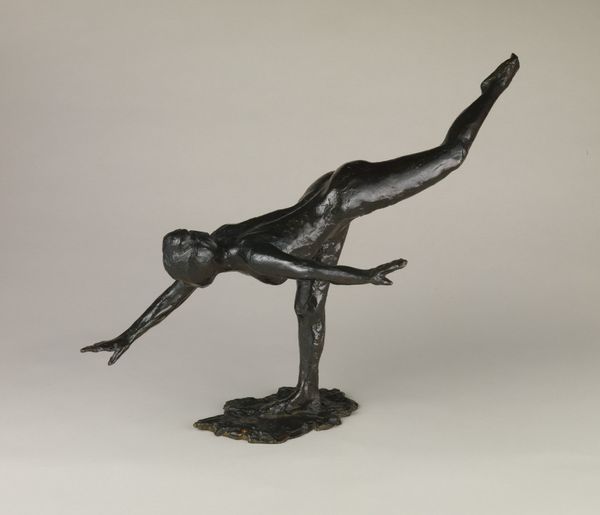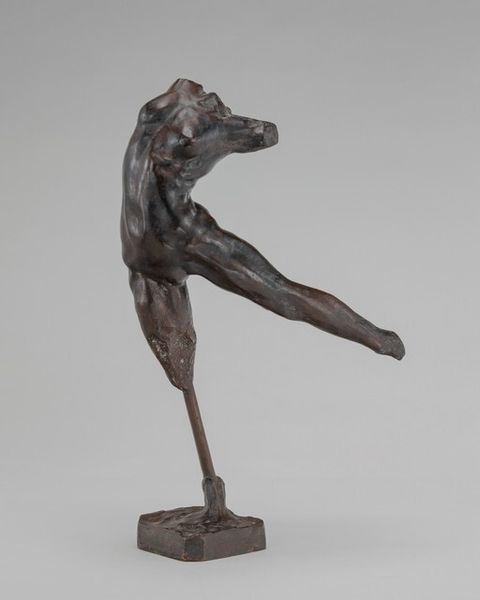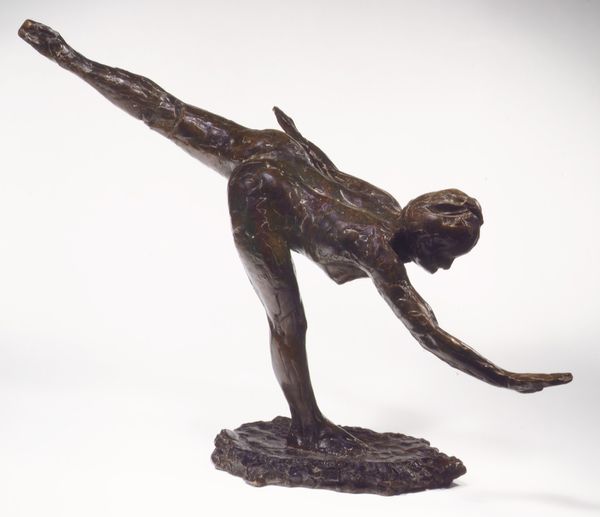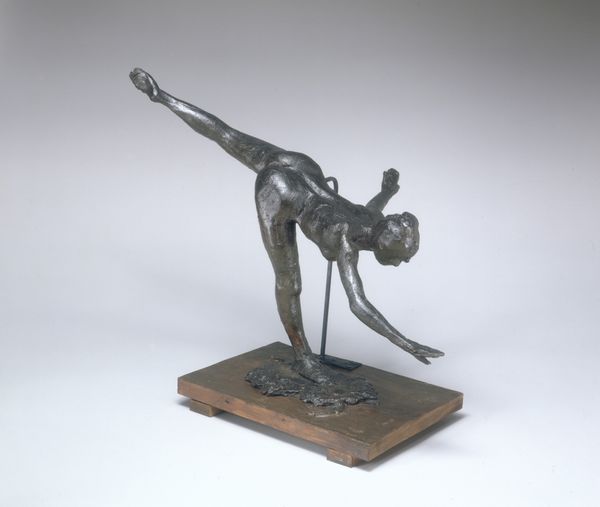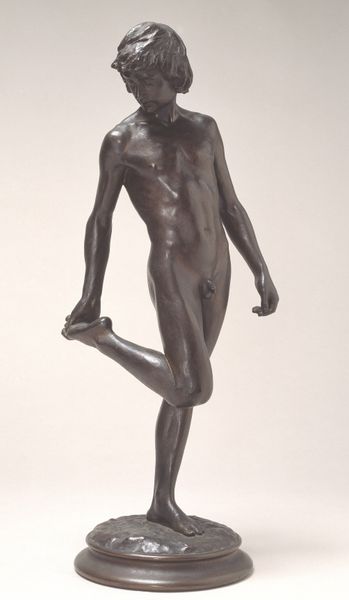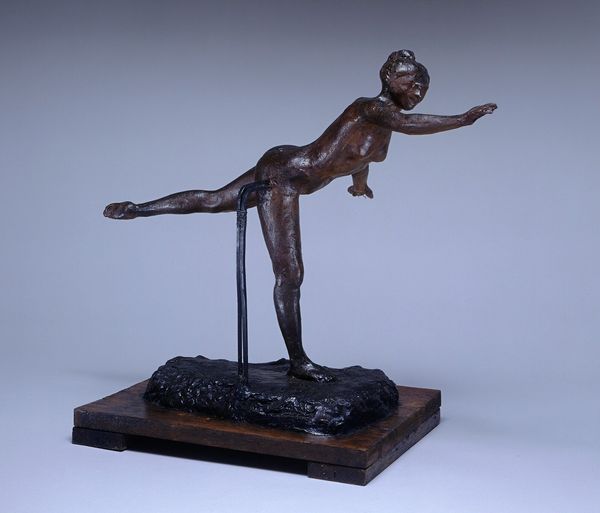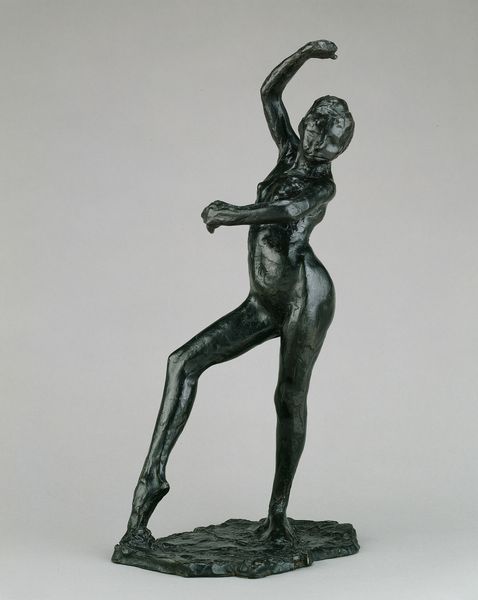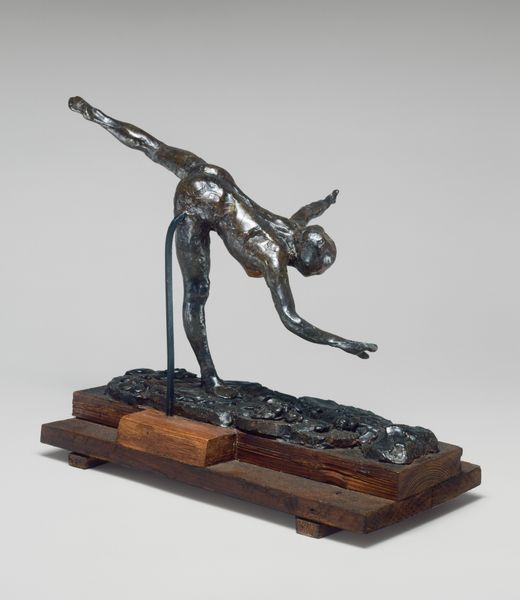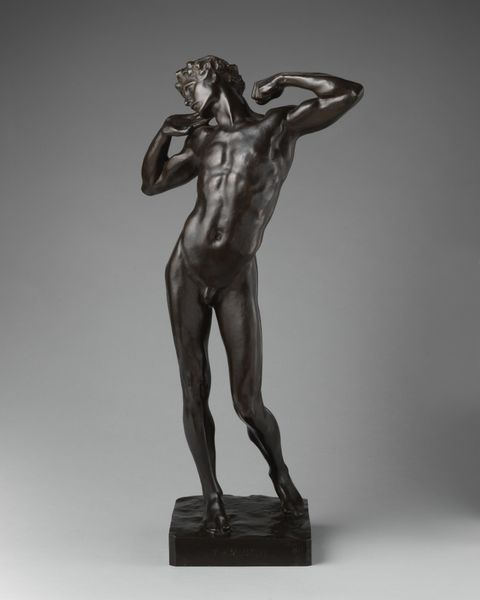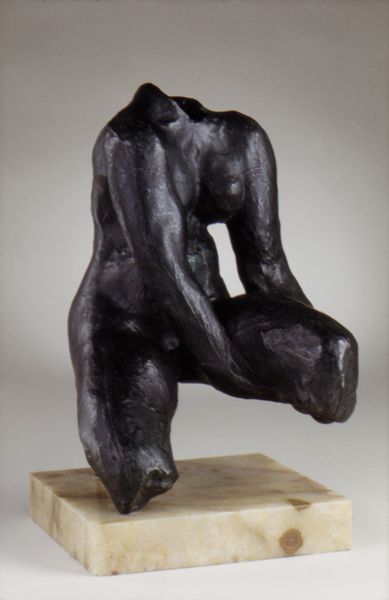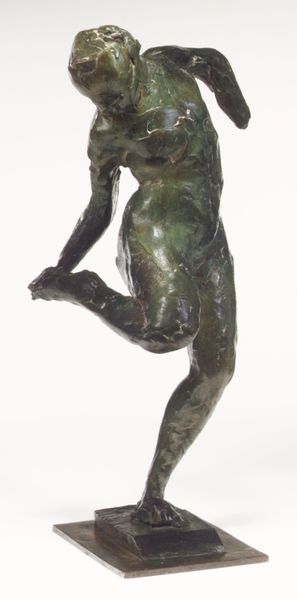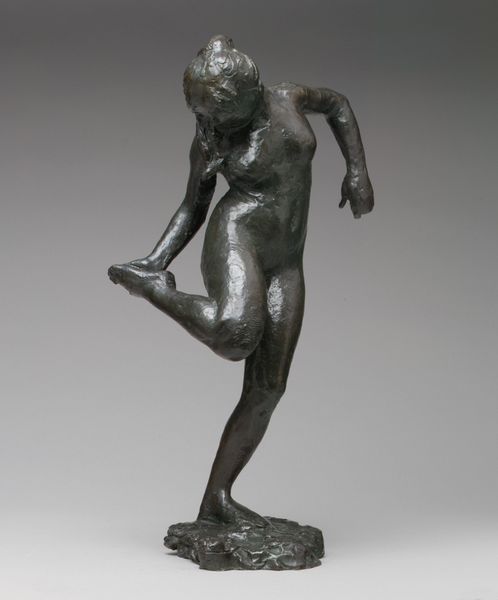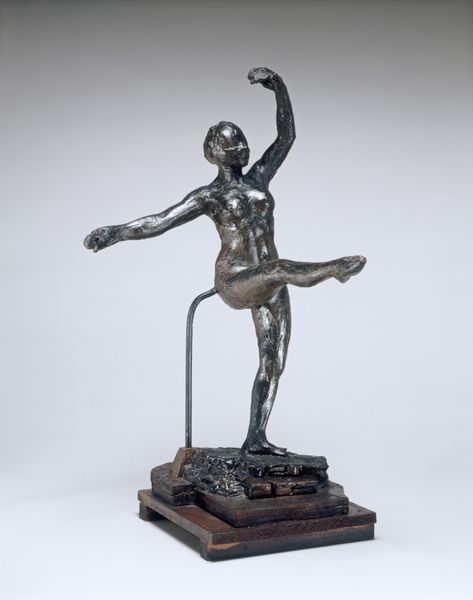
Dimensions: 54.6 × 61 cm (21 1/2 × 24 in.)
Copyright: Public Domain
Editor: So this is Degas' "Arabesque," a bronze sculpture he worked on between approximately 1885 and 1921. It really captures a fleeting moment, that incredible balance. How do you interpret this work, especially considering the period it was made in? Curator: Well, let’s think about what Degas was capturing with the human body during the late 19th century. Beyond a graceful figure, he depicted dancers frequently – a cultural fascination at that moment. He immortalized the everyday rather than idealised or classical. Don't you find it interesting how he defies the tradition of sculpting Greek gods and heroes? Editor: Absolutely! He’s turning towards modernity. I guess I’m curious about how the elite perceived such depictions. Was it simply aesthetic appreciation, or did it serve another purpose in shaping the discourse of the time? Curator: Exactly. Degas made art about seeing art. The late 19th century was a key period for the institutionalization of ballet. The Opera was as a very gendered space, marked by class divides and intense spectatorship. By sculpting his dancers as figures seemingly caught unaware, he plays with our expectations and the very idea of viewing. So what would the piece mean for him to create it, to be displayed, to be watched? Editor: So he wasn't just observing dance; he was making a statement about observing itself. The very act of viewing is put under the microscope, especially in its societal implications! Curator: Precisely! Now what do you make of its display in today's context? Editor: Considering today's increased awareness about body image, it becomes interesting to look at "Arabesque". The way this form is viewed has to have evolved quite a lot over the past 100 years or so. Thanks, that really puts the sculpture into a whole new context. Curator: It's these contextual shifts that keep art history alive! There is always a new question and perspective to take from works such as these.
Comments
No comments
Be the first to comment and join the conversation on the ultimate creative platform.
